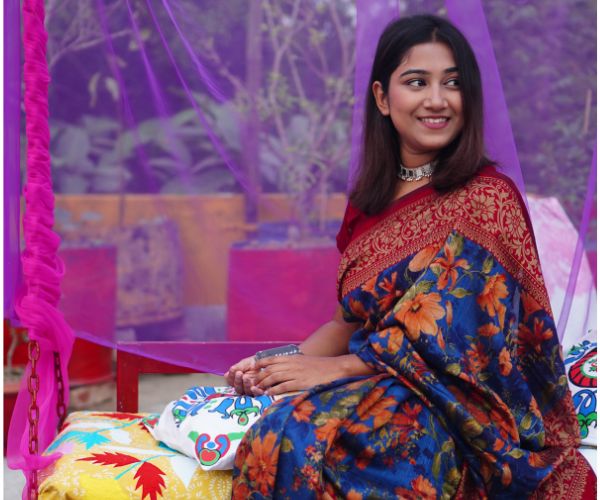Traditional Sri Lankan Clothing – By Nadeeka – eLanka

Sri Lanka is a land of rich cultural diversity, and traditional clothing plays an integral role in the country’s culture and lifestyle. The island nation boasts a colorful array of traditional attire that varies based on region, ethnicity, and occasion. From graceful sarongs to elegant osariyas, and from stylish veshtis to intricate sarees, Sri Lanka’s traditional clothing reflects its centuries-old traditions, customs, and beliefs.
Sarong – The Versatile and Iconic Sri Lankan Garment: The sarong is one of the most iconic and versatile garments in Sri Lanka. It is a rectangular piece of cloth that is worn by both men and women. The traditional Sri Lankan sarong is usually made of cotton or silk and comes in a wide range of vibrant colors and patterns. It is worn around the waist and extends down to the ankles, and is typically paired with a matching blouse or shirt.
Osariya – The Elegant and Graceful Sri Lankan Sari: The osariya, also known as the sari, is a traditional garment worn by Sri Lankan women on special occasions and formal events. It is a long piece of cloth that is draped around the body and worn with a blouse or bodice. The osariya is known for its graceful and elegant look, with its intricate pleats, folds, and pallu (decorative end) adding to its charm. The osariya is usually made of silk or other luxurious fabrics and comes in a wide range of colors, patterns, and designs.
Veshti – The Stylish and Traditional Sri Lankan Men’s Attire: The veshti, also known as the cheeththaya, is a traditional garment worn by Sri Lankan men. It is a piece of cloth that is wrapped around the waist and extends down to the ankles. The veshti is usually made of cotton and comes in various colors and patterns. It is often paired with a shirt or a jacket, and is commonly worn during formal occasions, religious ceremonies, and cultural events.
Ethnic Influences on Sri Lankan Clothing: Sri Lanka’s traditional clothing is also influenced by the diverse ethnic groups that inhabit the island. For example, the Kandyan saree is a distinct style of saree worn by Sinhalese women in the Kandyan region, characterized by its elaborate pleats and unique draping style. The Tamil women in Sri Lanka often wear the thavani, which is a two-piece garment consisting of a long skirt and a blouse. The Malay community in Sri Lanka has their traditional attire called the bajju, which is a colorful and vibrant outfit worn during cultural festivals and special occasions.
Traditional Sri Lankan Jewelry: Traditional jewelry is an important component of Sri Lankan attire, adding to its elegance and beauty. Sri Lanka is known for its exquisite jewelry crafted from precious metals like gold and silver, as well as colorful gemstones. Traditional Sri Lankan jewelry includes necklaces, earrings, bangles, rings, and anklets, adorned with intricate designs and often featuring traditional motifs such as lotus flowers, elephants, and peacocks.
Regional Variations: Sri Lanka’s traditional clothing also varies by region. For example, the Kandyan saree, as mentioned earlier, is a distinctive style of saree worn by women in the Kandyan region, which includes the central highlands of Sri Lanka. It is characterized by its unique draping style, where the pleats are draped over the left shoulder, and its elaborate patterns and embroidery. In contrast, the women in the coastal regions of Sri Lanka may wear a different style of saree, known as the “pottu osariya,” which has a different draping style and features colorful dots or “pottu” on the saree.
Traditional Headwear: Headwear is an important part of traditional Sri Lankan attire. Men in Sri Lanka often wear a traditional cap called the “muhudu maha” or the “polos hat,” which is made of woven straw or fabric and is worn for ceremonial occasions. Women may wear a decorative hairpin called the “seth mundu,” which is adorned with beads, pearls, and other embellishments. In some regions, women also wear a headscarf or veil as part of their traditional attire.
Occasions for Traditional Clothing: Traditional Sri Lankan clothing is often worn during special occasions and ceremonies, such as weddings, religious festivals, and cultural events. For example, the Kandyan saree is commonly worn by women during traditional Kandyan weddings and cultural performances, while the veshti is often worn by men during religious ceremonies and formal events. Traditional clothing is also passed down through generations and worn with pride during family gatherings and other traditional celebrations.
Contemporary Adaptations: While traditional Sri Lankan clothing continues to hold significance in the country’s culture, there are also contemporary adaptations of these garments. Modern interpretations of traditional Sri Lankan clothing may incorporate modern fabrics, patterns, and designs, while still retaining the essence of the traditional attire. This fusion of traditional and modern elements in Sri Lankan clothing reflects the country’s evolving fashion trends and changing lifestyles.
Conclusion: Traditional Sri Lankan clothing is not only a form of attire but also a reflection of the country’s rich cultural heritage, regional diversity, and sense of identity. The vibrant sarongs, elegant osariyas, stylish veshtis, and exquisite jewelry all contribute to the unique charm of Sri Lanka’s traditional clothing. Preserving, promoting, and embracing traditional Sri Lankan clothing is a way to honor and celebrate the country’s rich cultural legacy, and to appreciate the beauty and significance of its traditional attire in the modern world.







